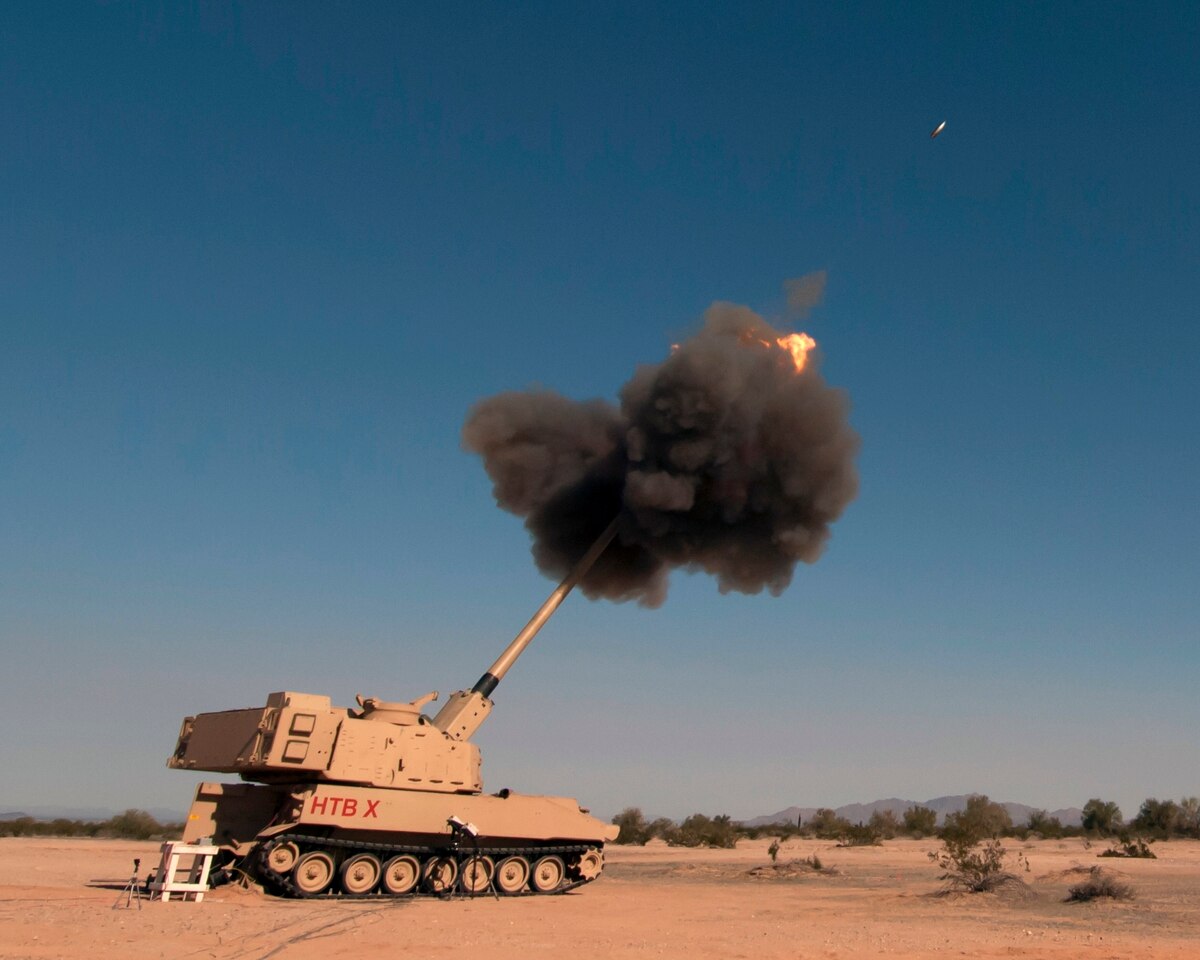Unlike most military installations that exist primarily to train troops, the main mission of U.S. Army Yuma Proving Ground (YPG) is to test the equipment Soldiers use to ensure it works as it should wherever in the world they need it. The equipment under test on any given day ranges from ground combat equipment to unmanned aerial systems. YPG personnel integrate weapons systems into helicopters and test both cargo and personnel parachutes. YPG’s developmental test mission includes evaluations of the most cutting-edge equipment. For example, YPG conducts developmental testing of multiple facets of Extended Range Cannon Artillery (ERCA), from the artillery shells to the longer cannon tube and larger firing chamber an improved howitzer will need to accommodate them.
“A place like Fort Hood is used primarily for training: Here at YPG, we do some very limited training events, but it’s not our primary mission. The troops at training ranges are usually using systems that have already been accepted into the Army’s inventory. Everything they are using has been certified as safe, and probably at some point was tested at a test center. We can characterize tube wear and anomalies as we test. We can figure out how a tube is doing as a result of shooting different types of propellant or projectiles. Concerning developmental tests, we have a lot of diagnostics and instrumentation that you wouldn’t see at a training base,” said Larry Bracamonte, YPG Technical Director.
YPG’s ammunition plant has been instrumental in building multiple experimental formulations, shapes, and configurations for new propelling charges to accommodate the improved projectiles. YPG often boasts of its large land area, capable of testing scores of different items every day without a conflict for space. Most of these tests require the most accurate measurements possible, and YPG’s Engineering Support Branch has long characterized every centimeter of YPG’s vast range. This level of measurement is unique to a proving ground like YPG. Though only a small portion of YPG’s overall workload, the post still supports training for Soldiers, whether a tenant unit like the Military Free Fall School that trains special forces parachutists, or transient units assisted by YPG’s Training and Exercise Management Office (TEMO).

“The whole reason TEMO is here is to support testing. We synchronize activities to make sure the priority always goes to the test. We don’t say no to training, but find efficiencies to be able to make it happen. The majority of the time training activities are invisible to test. It’s happening and people don’t realize it is happening. Being a test range gives us the flexibility to set and reset training and testing areas in any way we need to have them as long as doctrine supports it, the command approves it, it is within the unit’s capability, and we have the appropriate environmental documentation” said Luis Arroyo, TEMO chief.
In fielding the best equipment possible, testers are particularly interested in inspecting mortar and artillery tubes for anomalies as the systems undergo testing. YPG’s Physical Test Facility is regarded as second-to-none: In the area of cannon laser bore mapping, for instance, YPG has developed a variety of apparatus to map even the most microscopic crack or abnormal wear inside a cannon under test. The lab’s most ultra-precise stationary machine can measure an object accurately within 50 millionths of one inch. With the sheer volume of YPG’s artillery test workload and the size of its test range, however, being able to take measurements in the field is vitally important. The lab’s portable laser bore mapping capability is accurate to within two-tenths of one-thousandth of an inch and is rugged enough to take bouncing around on an unimproved road or in the cargo hold of an aircraft enduring turbulence.
Since items under test are oftentimes inherently dangerous weapon systems, the safety of evaluators is a key factor. All of this means that many of the fixtures and components to support this vigorous testing are not available on the commercial market, or need to be extensively modified for YPG’s needs. Whether it is a mock helicopter to serve as a target or a specialized mount to hold a machine gun under test, YPG oftentimes has to rapidly conceive of and build elaborate test fixtures to make possible a critical evaluation that Soldiers are counting on. Another key difference between a test facility like YPG and typical military installations is an extra emphasis on safety. Given the experimental nature of many of the items tested at the proving ground, munitions are typically fired remotely as personnel take cover behind reinforced concrete bombproofs. Counterintuitively, YPG’s status as primarily a test range provides it with flexibilities that training installations likely don’t have.












